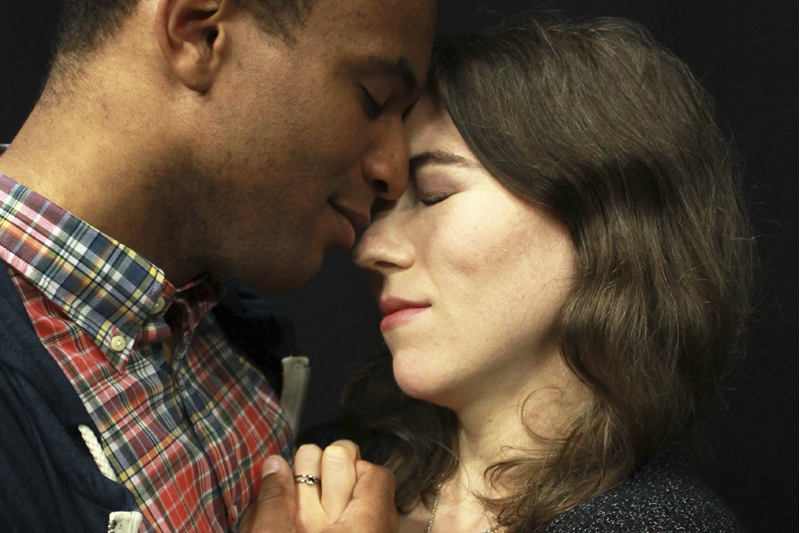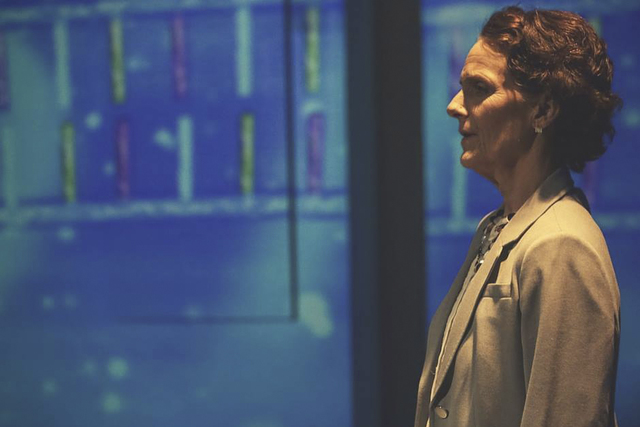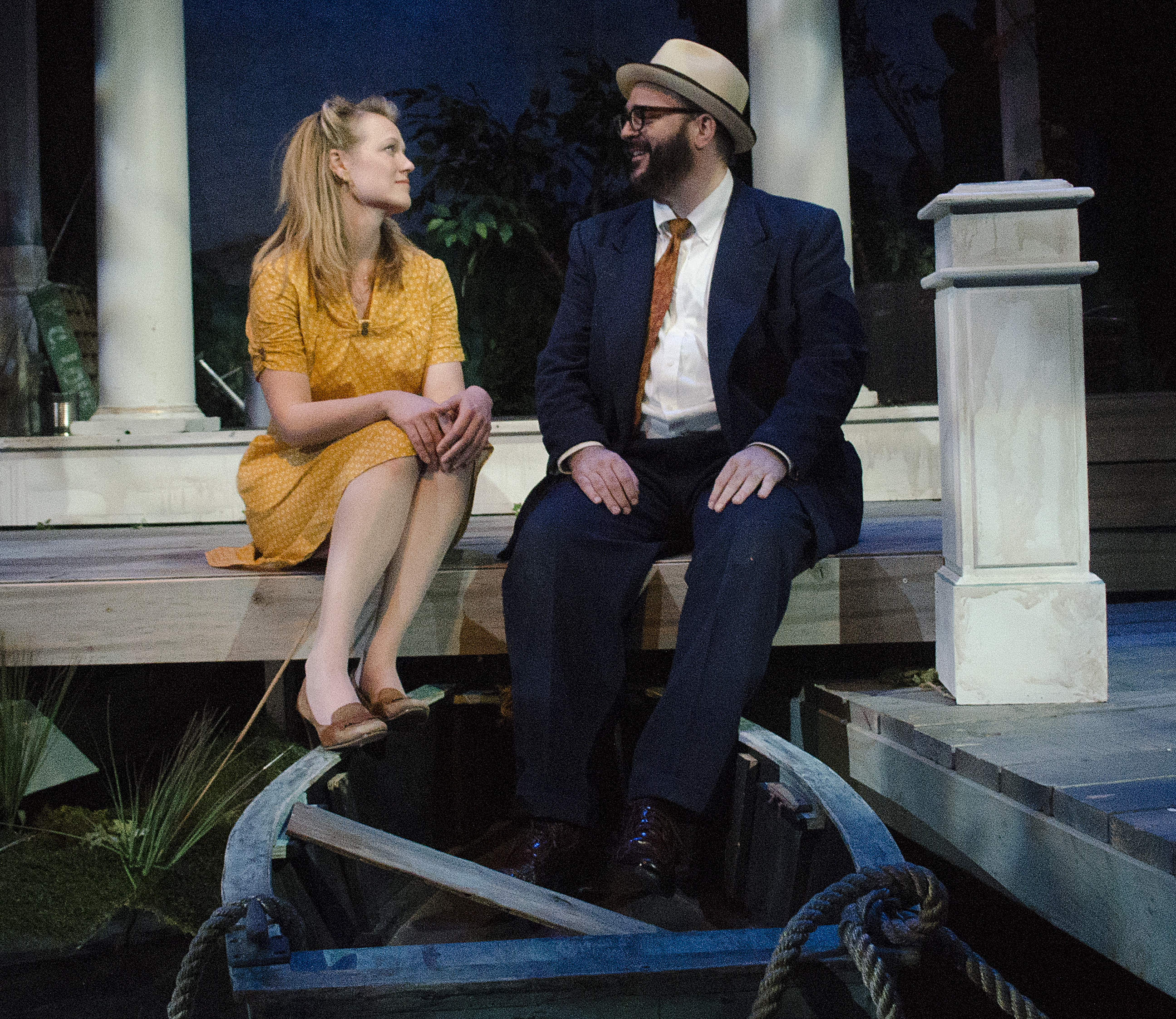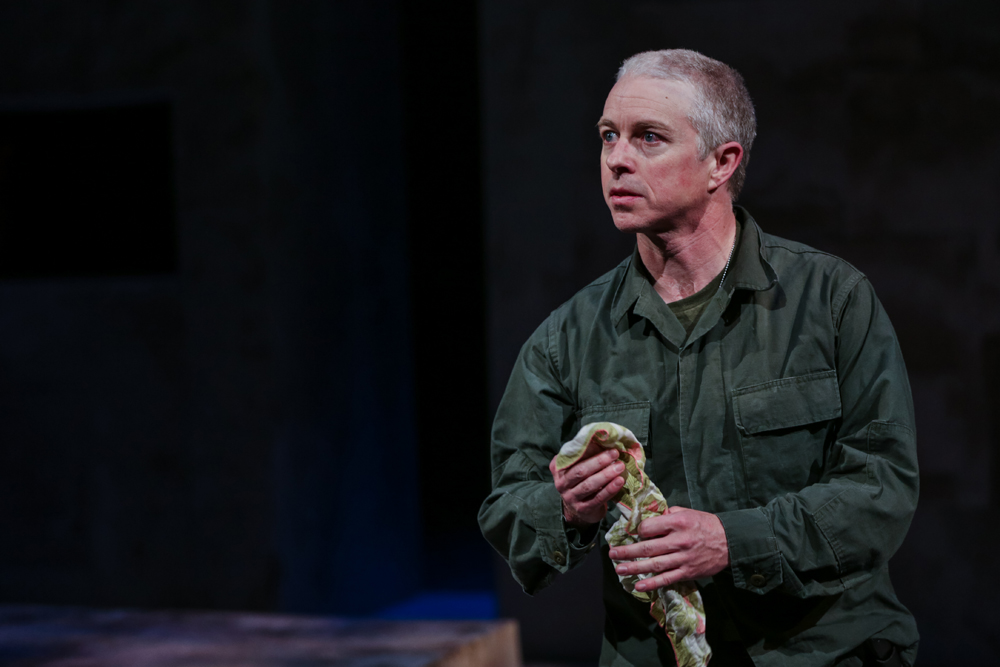The Zoo Story, written in 1958 as Peter and Jerry and considered Edward Albee’s first play, is short, weird, brutal, and mysterious. The single-scene piece about a chance meeting between two men in Central Park can leave audiences cold and empty. In 2004 the Hartford Stage commissioned Albee to write a prequel called Homelife to cast light on the character and context of one of the men. The resulting two-act, retitled At Home at the Zoo, is so much richer than the original that Albee has forbidden professional productions of Zoo Story alone.
In the first act, Peter (J.D. Lloyd), a bland textbook editor, tries to read a boring textbook while his wife Ann (Teri Lazzara), an understimulated housewife, natters and provokes him. Despite the somewhat clichéd setup of intimates who hardly know each other, Lloyd and Lazzara’s performances feel real and the dialogue spontaneous. Straight man Peter is passive and generic, speaking only when prodded and disappearing behind his eyeglasses. His distraction and unreachability soon feel like cruelty. Lazzara’s delicate features and bottle-blond ponytail disguise a restless intelligence that veers toward being patronizing in its effort not to wound.
Domestic marriage, it becomes clear, is the real zoo story. The home is a cage where couplings are random and forced, though (to Ann’s chagrin) not forceful. With effort, Ann and Peter are able to stir up a bit of pandemonium imagining a tornado, but their habits and temperaments compel them to tidy up immediately afterwards, and the toll this obligatory servicing of the relationship takes drives Peter out to Central Park to read.
Sitting on his customary bench, Peter is approached by another literary cliché, “the weird guy,” here known as Jerry (Alexander Samuels). Jerry just came from the zoo, and is eager to talk. He spews stories and philosophy, and draws Peter out of himself in ways one wouldn’t have imagined possible. Samuels’ Jerry is manic, unpredictable, dangerous, and charming. There’s an unspoken homoerotic vibe between him and Peter, who have both unsuccessfully sought meaningful connection elsewhere. Jerry is all about feeling and reacting, where Peter is all about stifling reaction. The addition of the first act thus provides a plausible explanation of why Peter engages to the degree he does with a crazy, potentially dangerous indigent.
Director Mary Machala, hot from directing Book-It’s hilarious adaptation of A Confederacy of Dunces, harnesses every bit of horsepower in this rebuild. But compared with Albee’s later work, which pushed much further and deeper into similar themes, At Home at the Zoo seems tame and two-dimensional, reminiscent of a series of New Yorker cartoons. Despite some updating of details (like Peter’s salary) in the park scene, there’s a tonal disconnect between the recently fashioned first act, which includes fairly frank references to sex and anatomy, and the quainter second act, dominated by Jerry’s long-winded tales. The ending is as disturbing as ever, though not more so for our new knowledge of Peter’s home life.







